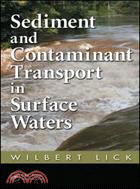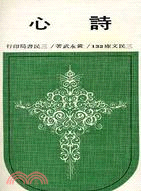Sediment and Contaminant Transport in Surface Waters
商品資訊
ISBN13:9781420059878
出版社:CRC Press UK
作者:Wilbert Lick
出版日:2008/09/11
裝訂/頁數:精裝/416頁
定價
:NT$ 11700 元優惠價
:90 折 10530 元
若需訂購本書,請電洽客服 02-25006600[分機130、131]。
商品簡介
目次
相關商品
商品簡介
Contaminated bottom sediments and their negative impacts on water quality are a major problem in surface waters throughout the United States as well as in many other parts of the world. Even after elimination of the primary contaminant sources, these bottom sediments will be a main source of contaminants for many years to come. In order to determine environmentally-effective and cost-effective remedial actions, the transport and fate of these sediments and associated contaminants must be understood and quantified. This book details how to best approach contaminated sediments, allowing readers to better assess and address water quality and health issues, water body management, and potential remediation methods.
Understand and Address Major Environmental Threats to Our Water
Sediment and contaminant transport is an enormously rich and complex field that involves physical, chemical, and biological processes as well as the mathematical modeling of these processes. While many books have been written on these broad topics, Sediment and Contaminant Transport in Surface Waters takes a more focused approach, highlighting areas that have been investigated but not covered thoroughly elsewhere.
This volume emphasizes the erosion, deposition, flocculation, and transport of fine-grained, cohesive sediments; the effects of finite rates of sorption on the transport and fate of hydrophobic contaminants; and the effects of major events such as floods and storms. Despite these emphases, the overall goal of the text is to present a general description and understanding of the transport of sediments and contaminants in surface waters as well as procedures to quantitatively predict this transport.
Understand and Address Major Environmental Threats to Our Water
Sediment and contaminant transport is an enormously rich and complex field that involves physical, chemical, and biological processes as well as the mathematical modeling of these processes. While many books have been written on these broad topics, Sediment and Contaminant Transport in Surface Waters takes a more focused approach, highlighting areas that have been investigated but not covered thoroughly elsewhere.
This volume emphasizes the erosion, deposition, flocculation, and transport of fine-grained, cohesive sediments; the effects of finite rates of sorption on the transport and fate of hydrophobic contaminants; and the effects of major events such as floods and storms. Despite these emphases, the overall goal of the text is to present a general description and understanding of the transport of sediments and contaminants in surface waters as well as procedures to quantitatively predict this transport.
目次
Introduction
Examples of Contaminated Sediment Sites
Hudson River
Lower Fox River
Passaic River/Newark Bay
Palos Verdes Shelf
Modeling, Parameterization, and Non-Unique Solutions
Modeling
Parameterization and Non-Unique Solutions
The Importance of Big Events
Overview of Book
General Properties of Sediments
Particle Sizes
Classification of Sizes
Measurements of Particle Size
Size Distributions
Variations in Size of Natural Sediments throughout a System
Settling Speeds
Mineralogy
Flocculation of Suspended Sediments
Bulk Densities of Bottom Sediments
Measurements of Bulk Density
Variations in Bulk Density
Sediment Erosion
Devices for Measuring Sediment Resuspension/Erosion
Annular Flumes
The Shaker
Sedflume
A Comparison of Devices
Results of Field Measurements
Detroit River
Kalamazoo River
Effects of Bulk Properties on Erosion Rates
Bulk Density
Particle Size
Mineralogy
Organic Content
Salinity
Gas
Comparison of Erosion Rates
Benthic Organisms and Bacteria
Initiation of Motion and a Critical Shear Stress for Erosion
Theoretical Analysis for Noncohesive Particles
Effects of Cohesive Forces
Effects of Bulk Density
Effects of Clay Minerals
Approximate Equations for Erosion Rates
Cohesive Sediments
Noncohesive Sediments
A Uniformly Valid Equation
Effects of Clay Minerals
Effects of Surface Slope
Noncohesive Sediments
Critical Stresses for Cohesive Sediments
Experimental Results for Cohesive Sediments
Flocculation, Settling, Deposition, and Consolidation
Basic Theory of Aggregation
Collision Frequency
Particle Interactions
Results of Flocculation Experiments
Flocculation due to Fluid Shear
Flocculation due to Differential Settling
Settling Speeds of Flocs
Flocs Produced in a Couette Flocculator
Flocs Produced in a Disk Flocculator
An Approximate and Uniformly Valid Equation for the Settling Speed of a Floc
Models of Flocculation
General Formulation and Model
A Simple Model
A Very Simple Model
An Alternate Derivation
Fractal Theory
Deposition
Processes and Parameters That Affect Deposition
Fluid Turbulence
Particle Dynamics
Particle Size Distribution
Flocculation
Bed Armoring/Consolidation
Partial Coverage of Previously Deposited Sediments by Recently Deposited Sediments
Experimental Results and Analyses
Implications for Modeling Deposition
Consolidation
Experimental Results
Basic Theory of Consolidation
Consolidation Theory Including Gas
Appendix A
Appendix B
Hydrodynamic Modeling
General Considerations in the Modeling of Currents
Basic Equations and Boundary Conditions
Eddy Coefficients
Bottom Shear Stress
Effects of Currents
Effects of Waves and Currents
Wind Stress
Sigma Coordinates
Numerical Stability
Two-Dimensional, Vertically Integrated, Time-Dependent Models
Basic Equations and Approximations
The Lower Fox River
Wind-Driven Currents in Lake Erie
Two-Dimensional, Horizontally Integrated, Time-Dependent Models
Basic Equations and Approximations
Time-Dependent Thermal Stratification in Lake Erie
Three-Dimensional, Time-Dependent Models
Lower Duwamish Waterway
Numerical Error Due to Use of Sigma Coordinates
Model of Currents and Salinities
Flow around Partially Submerged Cylindrical Bridge Piers
Wave Action
Wave Generation
Lake Erie
A Southwest Wind
A North Wind
Relation of Wave Action to Sediment Texture
Modeling Sediment Transport
Overview of Models
Dimensions
Quantities That Significantly Affect Sediment Transport
Erosion Rates
Particle/Floc Size Distributions
Settling Speeds
Deposition Rates
Flocculation of Particles
Consolidation
Erosion into Suspended Load and/or Bedload
Bed Armoring
Transport as Suspended Load and Bedload
Suspended Load
Bedload
Erosion into Suspended Load and/or Bedload
Bed Armoring
Simple Applications
Transport and Coarsening in a Straight Channel
Transport in an Expansion Region
Transport in a Curved Channel
The Vertical Transport and Distribution of Flocs
Rivers
Sediment Transport in the Lower Fox River
Model Parameters
A Time-Varying Flow
Upstream Boundary Condition for Sediment Concentration
Use of Sedflume Data in Modeling Erosion Rates
Effects of Grid Size
Sediment Transport in the Saginaw River
Sediment Transport during Spring Runoff
Long-Term Sediment Transport Predictions
Lakes and Bays
Modeling Big Events in Lake Erie
Transport due to Uniform Winds
The 1940 Armistice Day Storm
Geochronology
Comparison of Sediment Transport Models for Green Bay
Formation of a Turbidity Maximum in an Estuary
Numerical Model and Transport Parameters
Numerical Calculations
A Constant-Depth, Steady-State Flow
A Variable-Depth, Steady-State Flow
A Variable-Depth, Time-Dependent Tidal Flow
The Sorption and Partitioning of Hydrophobic Organic
Chemicals
Experimental Results and Analyses
Basic Experiments
Parameters That Affect Steady-State Sorption and Partitioning
Colloids from the Sediments
Colloids from the Water
Organic Content of Sediments
Sorption to Benthic Organisms and Bacteria
Nonlinear Isotherms
Modeling the Dynamics of Sorption
A Diffusion Model
A Simple and Computationally Efficient Model
Calculations with the General Model and Comparisons with Experimental Results
Desorption
Adsorption
Short-Term Adsorption Followed by Desorption
Effects of Chemical Properties on Adsorption
Modeling the Transport and Fate of Hydrophobic Chemicals
Effects of Erosion/Deposition and Transport
The Saginaw River
Green Bay, Effects of Finite Sorption Rates
The Diffusion Approximation for the Sediment-Water Flux
Simple, or Fickian, Diffusion
Sorption Equilibrium
A Mass Transfer Approximation
The Sediment-Water Flux due to Molecular Diffusion
Hexachlorobenzene (HCB)
Experiments
Theoretical Models
Diffusion of Tritiated Water
HCB Diffusion and Sorption
Additional HOCs
Experimental Results
Theoretical Model
Numerical Calculations
Long-Term Sediment-Water Fluxes
Related Problems
Flux from Contaminated Bottom Sediments to Clean Overlying Water
Flux Due to a Contaminant Spill
The Sediment-Water Flux Due to Bioturbation
Physical Mixing of Sediments by Organisms
The Flux of an HOC Due to Organisms
Experimental Procedures
Theoretical Model
Experimental and Modeling Results
Modeling Bioturbation as a Diffusion with Finite-Rate Sorption Process
The Sediment-Water Flux Due to "Diffusion"
The Flux and the Formation of Sediment Layers Due to Erosion/Deposition
Comparison of "Diffusive" Fluxes and Decay Times
Observations of Well-Mixed Layers
The Determination of an Effective h
Environmental Dredging: A Study of Contaminant Release and Transport
Transport of Dredged Particles
Transport and Desorption of Chemical Initially Sorbed to Dredged Particles
Diffusive Release of Contaminant from the Residual Layers
Volatilization
Water Quality Modeling, Parameterization, and Non-Unique Solutions
Process Models
Sediment Erosion
Sediment Deposition
Bed Armoring
The Sediment-Water Flux of HOCs Due to "Diffusion"
Equilibrium Partitioning
Numerical Grid
Parameterization and Non-Unique Solutions
Implications for Water Quality Modeling
References
Index
Examples of Contaminated Sediment Sites
Hudson River
Lower Fox River
Passaic River/Newark Bay
Palos Verdes Shelf
Modeling, Parameterization, and Non-Unique Solutions
Modeling
Parameterization and Non-Unique Solutions
The Importance of Big Events
Overview of Book
General Properties of Sediments
Particle Sizes
Classification of Sizes
Measurements of Particle Size
Size Distributions
Variations in Size of Natural Sediments throughout a System
Settling Speeds
Mineralogy
Flocculation of Suspended Sediments
Bulk Densities of Bottom Sediments
Measurements of Bulk Density
Variations in Bulk Density
Sediment Erosion
Devices for Measuring Sediment Resuspension/Erosion
Annular Flumes
The Shaker
Sedflume
A Comparison of Devices
Results of Field Measurements
Detroit River
Kalamazoo River
Effects of Bulk Properties on Erosion Rates
Bulk Density
Particle Size
Mineralogy
Organic Content
Salinity
Gas
Comparison of Erosion Rates
Benthic Organisms and Bacteria
Initiation of Motion and a Critical Shear Stress for Erosion
Theoretical Analysis for Noncohesive Particles
Effects of Cohesive Forces
Effects of Bulk Density
Effects of Clay Minerals
Approximate Equations for Erosion Rates
Cohesive Sediments
Noncohesive Sediments
A Uniformly Valid Equation
Effects of Clay Minerals
Effects of Surface Slope
Noncohesive Sediments
Critical Stresses for Cohesive Sediments
Experimental Results for Cohesive Sediments
Flocculation, Settling, Deposition, and Consolidation
Basic Theory of Aggregation
Collision Frequency
Particle Interactions
Results of Flocculation Experiments
Flocculation due to Fluid Shear
Flocculation due to Differential Settling
Settling Speeds of Flocs
Flocs Produced in a Couette Flocculator
Flocs Produced in a Disk Flocculator
An Approximate and Uniformly Valid Equation for the Settling Speed of a Floc
Models of Flocculation
General Formulation and Model
A Simple Model
A Very Simple Model
An Alternate Derivation
Fractal Theory
Deposition
Processes and Parameters That Affect Deposition
Fluid Turbulence
Particle Dynamics
Particle Size Distribution
Flocculation
Bed Armoring/Consolidation
Partial Coverage of Previously Deposited Sediments by Recently Deposited Sediments
Experimental Results and Analyses
Implications for Modeling Deposition
Consolidation
Experimental Results
Basic Theory of Consolidation
Consolidation Theory Including Gas
Appendix A
Appendix B
Hydrodynamic Modeling
General Considerations in the Modeling of Currents
Basic Equations and Boundary Conditions
Eddy Coefficients
Bottom Shear Stress
Effects of Currents
Effects of Waves and Currents
Wind Stress
Sigma Coordinates
Numerical Stability
Two-Dimensional, Vertically Integrated, Time-Dependent Models
Basic Equations and Approximations
The Lower Fox River
Wind-Driven Currents in Lake Erie
Two-Dimensional, Horizontally Integrated, Time-Dependent Models
Basic Equations and Approximations
Time-Dependent Thermal Stratification in Lake Erie
Three-Dimensional, Time-Dependent Models
Lower Duwamish Waterway
Numerical Error Due to Use of Sigma Coordinates
Model of Currents and Salinities
Flow around Partially Submerged Cylindrical Bridge Piers
Wave Action
Wave Generation
Lake Erie
A Southwest Wind
A North Wind
Relation of Wave Action to Sediment Texture
Modeling Sediment Transport
Overview of Models
Dimensions
Quantities That Significantly Affect Sediment Transport
Erosion Rates
Particle/Floc Size Distributions
Settling Speeds
Deposition Rates
Flocculation of Particles
Consolidation
Erosion into Suspended Load and/or Bedload
Bed Armoring
Transport as Suspended Load and Bedload
Suspended Load
Bedload
Erosion into Suspended Load and/or Bedload
Bed Armoring
Simple Applications
Transport and Coarsening in a Straight Channel
Transport in an Expansion Region
Transport in a Curved Channel
The Vertical Transport and Distribution of Flocs
Rivers
Sediment Transport in the Lower Fox River
Model Parameters
A Time-Varying Flow
Upstream Boundary Condition for Sediment Concentration
Use of Sedflume Data in Modeling Erosion Rates
Effects of Grid Size
Sediment Transport in the Saginaw River
Sediment Transport during Spring Runoff
Long-Term Sediment Transport Predictions
Lakes and Bays
Modeling Big Events in Lake Erie
Transport due to Uniform Winds
The 1940 Armistice Day Storm
Geochronology
Comparison of Sediment Transport Models for Green Bay
Formation of a Turbidity Maximum in an Estuary
Numerical Model and Transport Parameters
Numerical Calculations
A Constant-Depth, Steady-State Flow
A Variable-Depth, Steady-State Flow
A Variable-Depth, Time-Dependent Tidal Flow
The Sorption and Partitioning of Hydrophobic Organic
Chemicals
Experimental Results and Analyses
Basic Experiments
Parameters That Affect Steady-State Sorption and Partitioning
Colloids from the Sediments
Colloids from the Water
Organic Content of Sediments
Sorption to Benthic Organisms and Bacteria
Nonlinear Isotherms
Modeling the Dynamics of Sorption
A Diffusion Model
A Simple and Computationally Efficient Model
Calculations with the General Model and Comparisons with Experimental Results
Desorption
Adsorption
Short-Term Adsorption Followed by Desorption
Effects of Chemical Properties on Adsorption
Modeling the Transport and Fate of Hydrophobic Chemicals
Effects of Erosion/Deposition and Transport
The Saginaw River
Green Bay, Effects of Finite Sorption Rates
The Diffusion Approximation for the Sediment-Water Flux
Simple, or Fickian, Diffusion
Sorption Equilibrium
A Mass Transfer Approximation
The Sediment-Water Flux due to Molecular Diffusion
Hexachlorobenzene (HCB)
Experiments
Theoretical Models
Diffusion of Tritiated Water
HCB Diffusion and Sorption
Additional HOCs
Experimental Results
Theoretical Model
Numerical Calculations
Long-Term Sediment-Water Fluxes
Related Problems
Flux from Contaminated Bottom Sediments to Clean Overlying Water
Flux Due to a Contaminant Spill
The Sediment-Water Flux Due to Bioturbation
Physical Mixing of Sediments by Organisms
The Flux of an HOC Due to Organisms
Experimental Procedures
Theoretical Model
Experimental and Modeling Results
Modeling Bioturbation as a Diffusion with Finite-Rate Sorption Process
The Sediment-Water Flux Due to "Diffusion"
The Flux and the Formation of Sediment Layers Due to Erosion/Deposition
Comparison of "Diffusive" Fluxes and Decay Times
Observations of Well-Mixed Layers
The Determination of an Effective h
Environmental Dredging: A Study of Contaminant Release and Transport
Transport of Dredged Particles
Transport and Desorption of Chemical Initially Sorbed to Dredged Particles
Diffusive Release of Contaminant from the Residual Layers
Volatilization
Water Quality Modeling, Parameterization, and Non-Unique Solutions
Process Models
Sediment Erosion
Sediment Deposition
Bed Armoring
The Sediment-Water Flux of HOCs Due to "Diffusion"
Equilibrium Partitioning
Numerical Grid
Parameterization and Non-Unique Solutions
Implications for Water Quality Modeling
References
Index
主題書展
更多
主題書展
更多書展今日66折
您曾經瀏覽過的商品
購物須知
外文書商品之書封,為出版社提供之樣本。實際出貨商品,以出版社所提供之現有版本為主。部份書籍,因出版社供應狀況特殊,匯率將依實際狀況做調整。
無庫存之商品,在您完成訂單程序之後,將以空運的方式為你下單調貨。為了縮短等待的時間,建議您將外文書與其他商品分開下單,以獲得最快的取貨速度,平均調貨時間為1~2個月。
為了保護您的權益,「三民網路書店」提供會員七日商品鑑賞期(收到商品為起始日)。
若要辦理退貨,請在商品鑑賞期內寄回,且商品必須是全新狀態與完整包裝(商品、附件、發票、隨貨贈品等)否則恕不接受退貨。
























